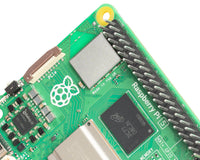Raspberry Pi Roundup - 13th October 2015
Underground

MIT student Ian Reynolds has a fascination with the Greater Boston transit system, and more specifically MBTA’s T subway. So, he brought together a bunch of LED strips, an Arduino and a Raspberry Pi to create some wall art for his bedroom that shows the positions of trains. The Raspberry Pi reads data from MBTA’s public API and then plots the locations, via the Arduino, onto the wall-mounted LED strips. He has detailed the build and programming on his blog.
Jessie

Exciting news on the operating system front this morning.
Raspbian, the standard OS for the Raspberry Pi, now uses the Jessie version of Debian as a base. This has introduced several new improvements, chiefly among which are:
- sudo-less GPIO access
- User interface improvements, including the replacement of raspi-config with a GUI version
- Two new Java programming environments
- Inclusion of LibreOffice as standard (for better or worse!)
More information on the improvements can be found on the Foundation’s blog.
The 4.3GB image is available as a download from the Raspberry Pi Foundation.
It is recommended that you start with a new install (i.e. overwrite the SD card completely) as the upgrade path isn’t all that stable. This could prove a problem for some users, who already have stuff on their SD cards they don’t want to lose, but I’m sure the benefits outweigh the effort of transferring your stuff elsewhere first (for instance to GitHub).
Scratch

The Pi Podcast is really starting to hit its stride now. In this episode, they interview Scratch developer Tim Rowledge and cover the big news story that Raspbian has transitioned to Debian Jessie. Listen to the podcast here.
Identity

Martin Hertig from Switzerland has created an art installation called “Sensible Data” that shows just how easily people give up personal data, and what the pitfalls of that are. You use an iPad to take your photograph and give your email address. The photograph is scanned by a Raspberry Pi to work out your age, gender, ‘beauty’ and mood and this information is then printed onto a faux “passport” for you to take away. The printing is triggered by holding an unidentified button for three seconds… which grabs your fingerprint… To hammer home the point of the lack of control of personal data, you are then emailed the details of a previous participant. You can read more about the installation here.





